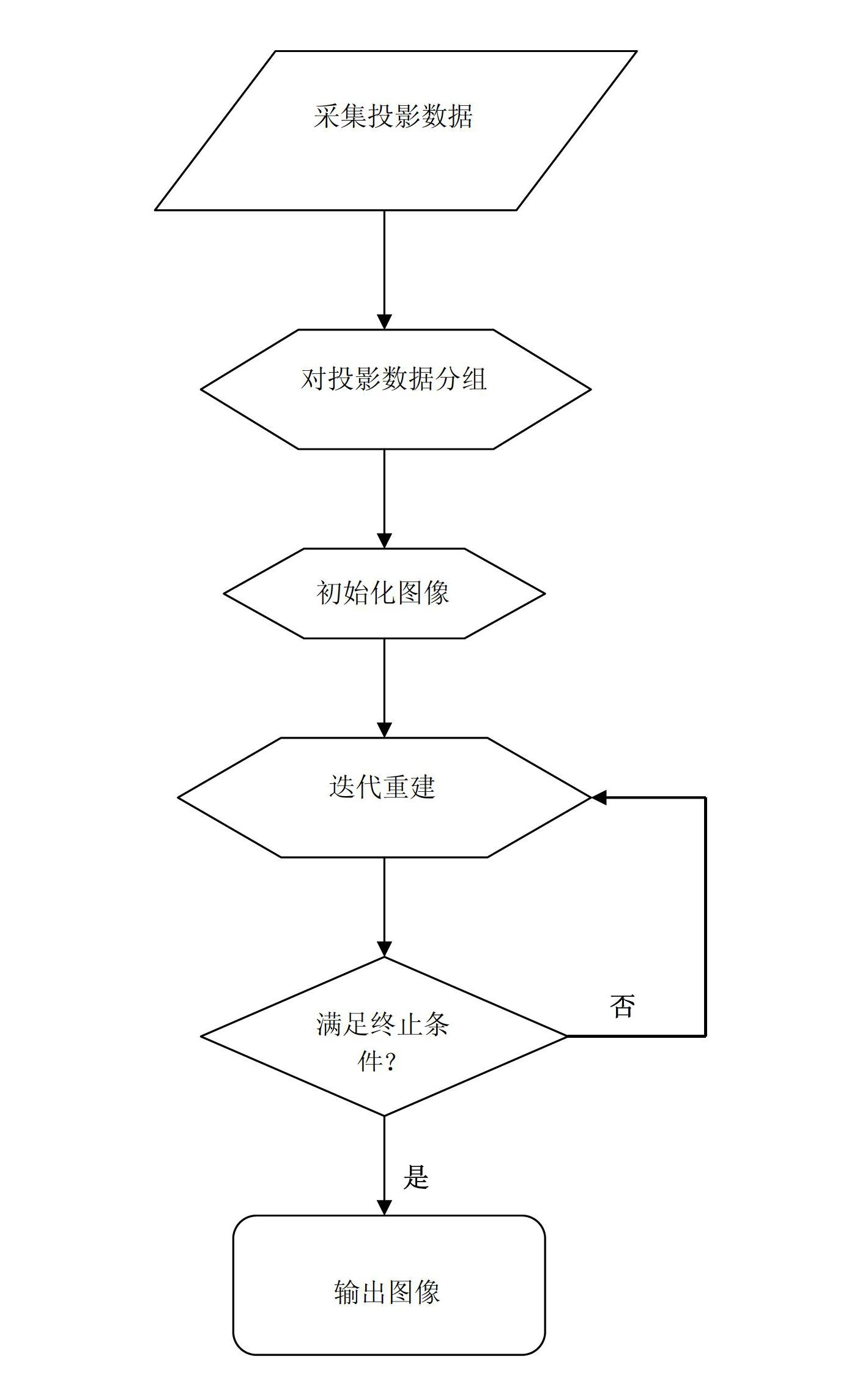Method for reconstructing sparse degree CT (Computed Tomography) image
A sparse-angle, CT image technology, applied in the field of reconstruction of sparse-angle CT images, can solve the problems of shortened scanning time for patients, impact of imaging quality, blurred reconstructed images, etc.
- Summary
- Abstract
- Description
- Claims
- Application Information
AI Technical Summary
Problems solved by technology
Method used
Image
Examples
Embodiment Construction
[0035] This embodiment describes in detail the specific implementation process of the reconstruction method of the present invention by taking a sparse-angle CT image of the chest of a lung cancer patient as an example.
[0036] see figure 1 , the implementation process of this embodiment is as follows.
[0037] 1. Start the GE lightspeed 16-row CT machine, make the tube of the CT machine rotate for one circle, and sequentially collect 72 projection data of lung cancer patients with sparse chest images, and then the projection data of the 72 images collected are divided into 6 groups, each group is the projection data of 12 pictures; record the system parameters of the CT machine at the same time.
[0038] 2. Let α=-1 and β=0.001 in the formula (I) and formula (II) described in the summary of the invention, and use the formula (I) as the reconstruction model to solve the formula (II) obtained by using the auxiliary function method The iterative operation method shown is reco...
PUM
 Login to View More
Login to View More Abstract
Description
Claims
Application Information
 Login to View More
Login to View More - R&D
- Intellectual Property
- Life Sciences
- Materials
- Tech Scout
- Unparalleled Data Quality
- Higher Quality Content
- 60% Fewer Hallucinations
Browse by: Latest US Patents, China's latest patents, Technical Efficacy Thesaurus, Application Domain, Technology Topic, Popular Technical Reports.
© 2025 PatSnap. All rights reserved.Legal|Privacy policy|Modern Slavery Act Transparency Statement|Sitemap|About US| Contact US: help@patsnap.com



